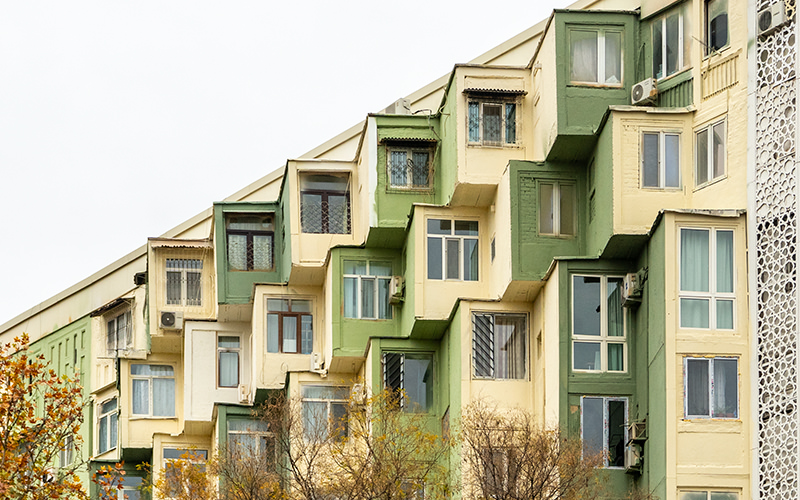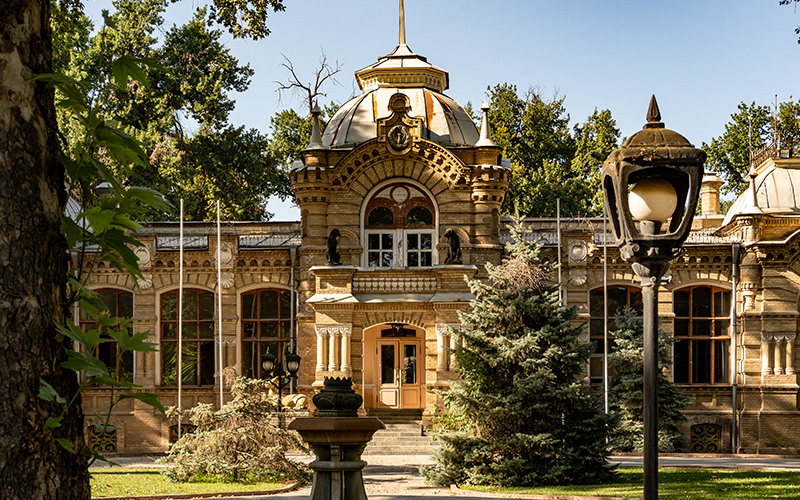During one of my walks in the center of Tashkent this summer, I noticed an intriguing structure with several arcades and a fountain in front of the central entrance. It turned out to be the building of the State Academic Bolshoi Theatre of Uzbekistan named after Alisher Navoi. One of the most surprising facts I learned about this landmark is that the project was designed by Alexey Viktorovich Shchusev, the architect of Lenin's Mausoleum in Moscow.


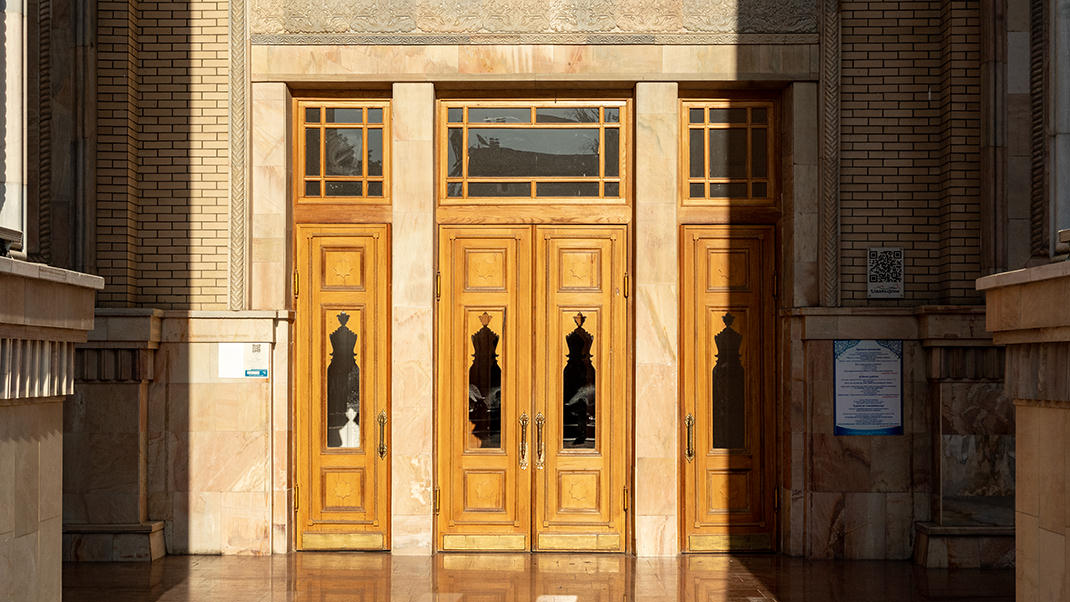
How to Get There
The theater is located at 28 Zarafshon Street. It is easily accessible by metro, with the Mustaqillik maydoni station nearby, and a ten-minute walk from there to the theater.
Near the theater, several well-known city attractions can be found, including the State Museum of the History of Uzbekistan, the Central Exhibition Hall of the Academy of Arts, and the former palace of Grand Duke N. K. Romanov.

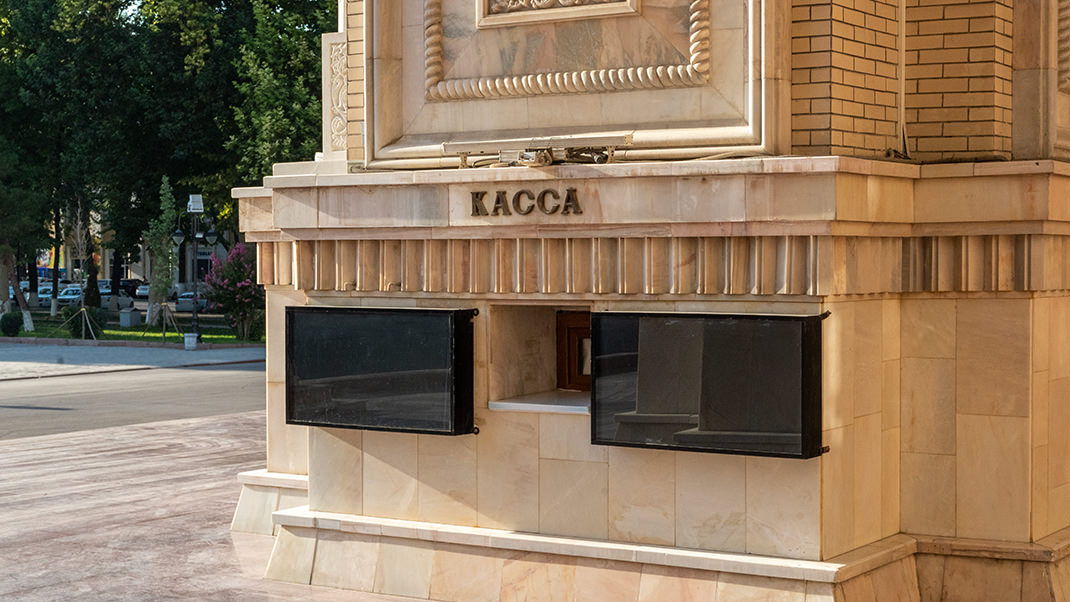

A Bit of History
The modern Alisher Navoi Theatre traces its origins to a concert-ethnographic ensemble founded in the 1920s. Later, the Uzbek Musical Theatre was established based on this troupe, and in 1939, the State Academic Grand Theatre of Opera and Ballet was formed.
Construction of the monumental building for the theater began in 1940. Previously, the Resurrection Bazaar stalls were located on this site, humorously referred to as the "Drunk Bazaar" due to a concentration of a third of the drinking establishments in this new part of the city.


Architect Alexey Viktorovich Shchusev won the All-Union competition for the best design of the new building. As mentioned earlier, he was involved in the construction of Lenin's Mausoleum and contributed to the construction of the complex of the Moscow Kazan Railway Station, the building of the USSR Ministry of State Security on Lubyanka, one of the buildings of the Tretyakov Gallery, and many other structures.
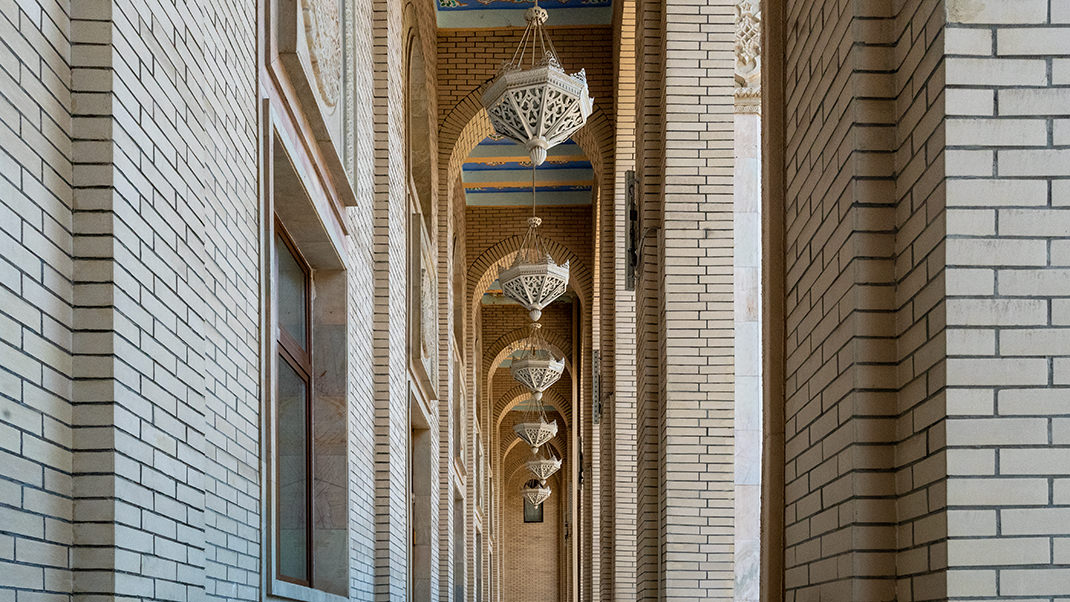

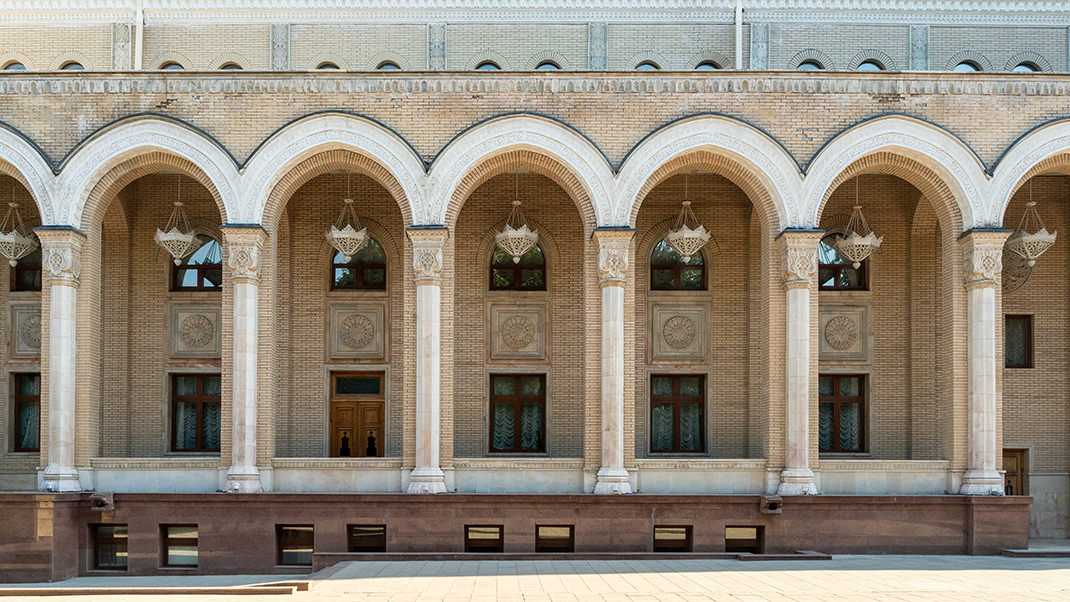
The construction of the building took seven years. In 1948, the theater was named after the Uzbek poet Alisher Navoi, who lived in the 15th century, coinciding with the construction of the new building during the 500th anniversary of his birth. In the same year, 1948, Shchusev received the State Prize of the USSR for his project.
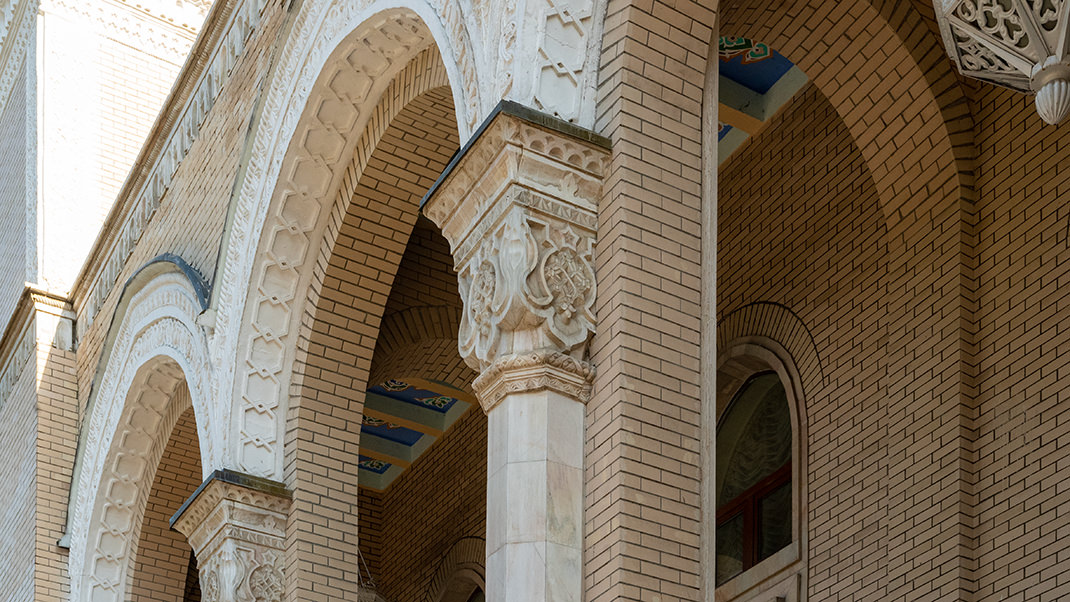
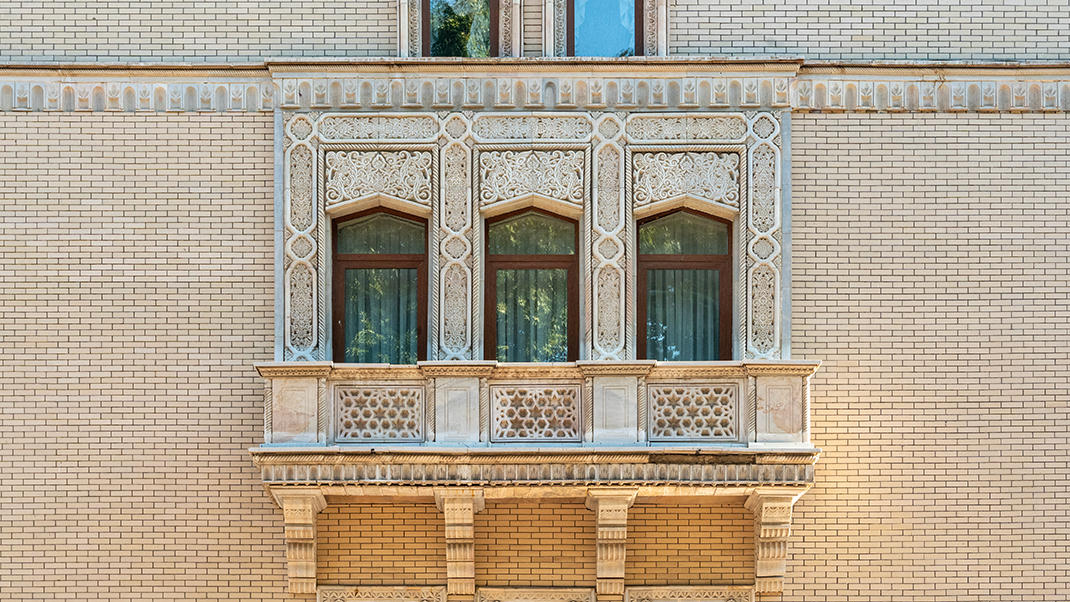
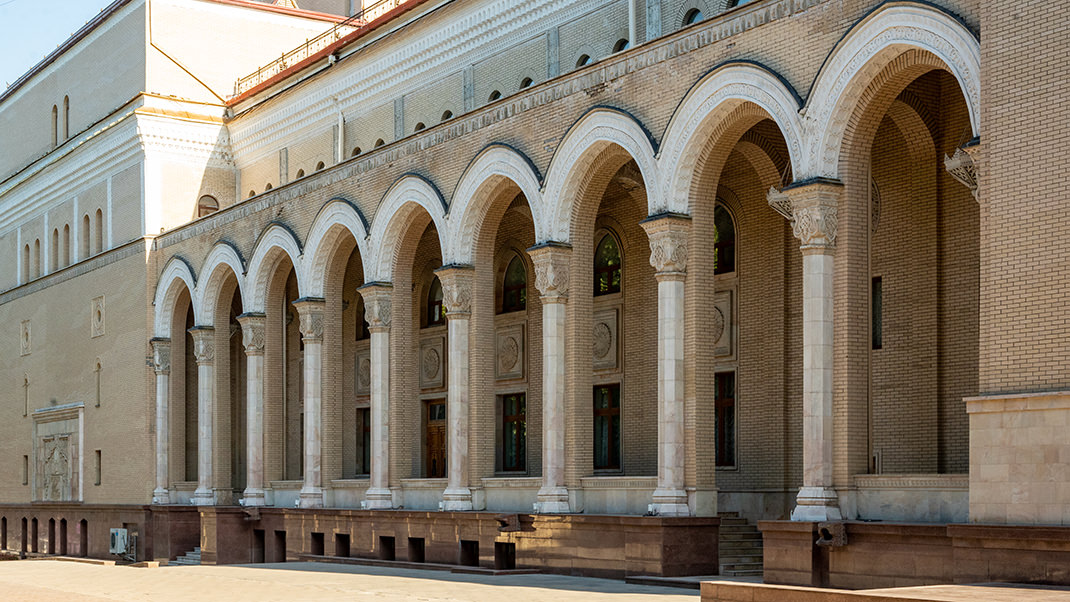
Old sources indicate that the theater's auditorium was designed for 1,400 seats, but today the complex's website states that the venue can accommodate 675 people. Likely, extensive renovations have taken place during the theater's existence.
During the construction of the theater building, a new square with a fountain appeared in the city. Today, it is often a place where locals relax. Occasionally, in the evenings, this space transforms into a large open-air auditorium. For example, in early September this year, the festival "Autumn Symphony of Love" took place in front of the main facade.
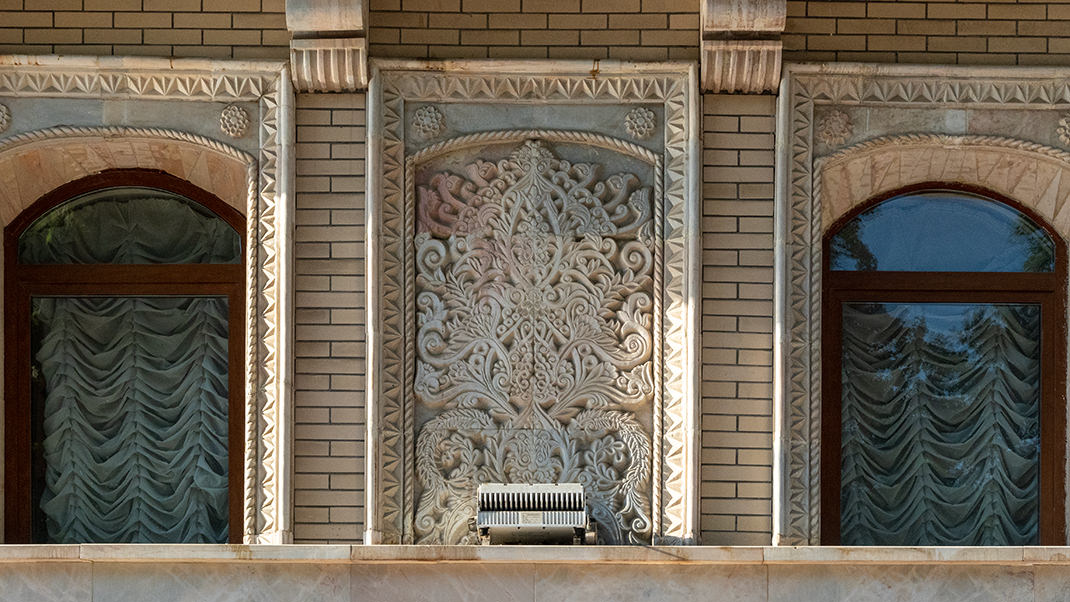


As a final note, I would like to mention that in my travel articles, I have repeatedly mentioned the architect Shchusev. I suggest continuing your acquaintance with his work in the material about the Narkomzem building in Moscow.
Have a nice trip!


